
Contents of the page
- 1 Scoliosis of the spine in adults - causes of development
- 2 Symptoms of
- 3 Select several degrees of scoliosis in adults
- 4 Complications of
- 5 How to treat spine scoliosis in adults?
- 6 Contraindications to exercise therapy
- 7 Prevention
Posture disorder is the most common problem in adults and children. Initial signs of scoliosis can be noted even in early childhood. In adulthood, this is exacerbated by the specifics of the work and a decrease in motor activity. Scoliosis of the spine in adults is a disease that requires constant monitoring by doctors and the provision of preventive and restorative treatment.
Degenerative diseases of the musculoskeletal system develop gradually and for a long time. All parts of the spinal column( cervical, thoracic, lumbar) can be damaged. In scoliosis, most often in the process involves several parts of the spine, which affects the clinical picture of the disease.
Scoliosis of the spine in adults - the causes of development of
 Photo: Scoliosis of the spine in adults - congenital causes of
Photo: Scoliosis of the spine in adults - congenital causes of It is difficult to identify the primary causes of the disease. Most often it is:
- spinal injury;
- osteochondrosis;
- intervertebral hernia and protrusion of discs;
- osteoporosis;
- osteomalacia( softening of bone tissue);
- complications on the spine after infectious diseases( for example, tuberculosis);
- operations on the spinal column;
- unknown causes;
- is a hereditary factor of diseases of the musculoskeletal system;
- poorly treated or not diagnosed scoliosis of childhood;
- oncological diseases of the spine or other organs.
Symptoms of
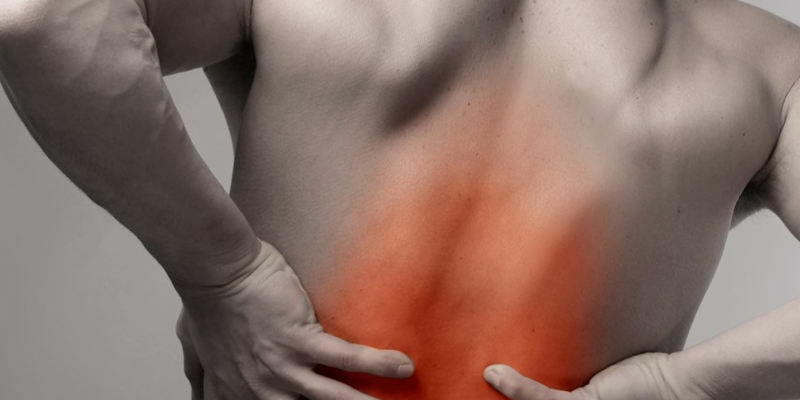
Scoliosis of the spine in an adult is always accompanied by a pain syndrome. The degree of severity of pain depends on individual characteristics. By nature, patients describe a burning or persistent, aching pain more often in the interblade area. As the process develops, the pain from the periodic, becomes permanent. This entails a number of changes.
It should be noted that compensatory person to reduce the pain is trying to take a comfortable position, which is the trigger mechanism in the violation of the shape of the spine. In addition, the muscular tension roller begins to form, which aggravates the pain syndrome.
Of course, scoliosis does not develop for several days. In most cases, visible changes are noted after many years. This is due to the fact that the musculoskeletal system is quite resistant to different kinds of loads. Naturally, the process accelerates, if in addition there are other diseases of the musculoskeletal system.
Scoliosis of the spine in adults is not accompanied by fever and not every person will consult a doctor at the slightest pain. Taking various analgesics, the pain syndrome can be stopped, but this does not mean that the process has stopped.
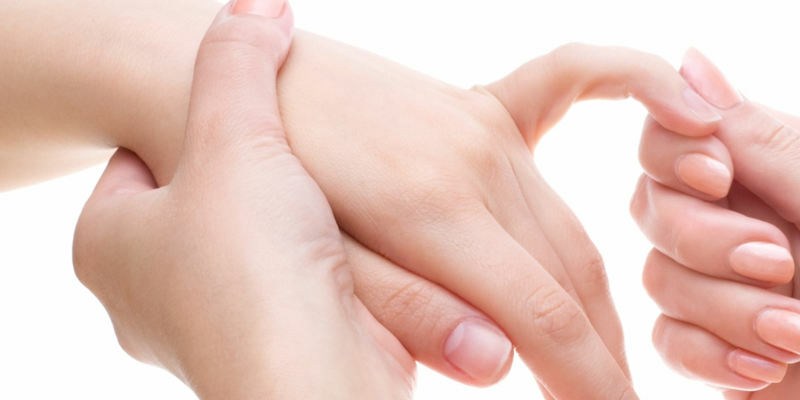 One of the symptoms: a decrease in the sensitivity of the fingers
One of the symptoms: a decrease in the sensitivity of the fingers This is an additional burdening factor. In addition to the pain syndrome, abnormalities of sensitivity in the fingers of the hands, reduction of muscle strength in the hands and hands can be attached. It is these changes that the patient begins to notice, and I encourage the patient to see the doctor.
Briefly, the main signs of the disease can be listed as follows:
- back pain;
- asymmetry of the shoulders( one shoulder above the other);
- strain the muscles of the back, which leads to stiffness of movements;
- visual changes in the correctness of the spinal column( hump formation);
- changes in the work of internal organs;
- gait violation.
There are several degrees of scoliosis in adults
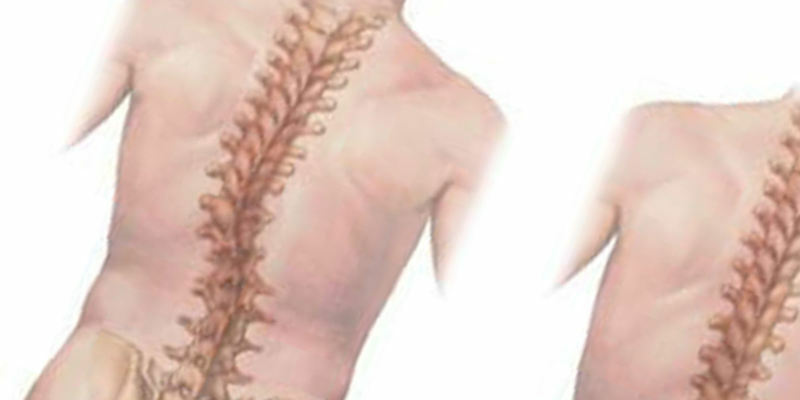
- Scoliosis of the 1st degree of in adults is characterized by the fact that the asymmetry of the shoulder girdle is practically not noticeable. A flaccidity of posture is striking, so-called stoop. The angle of the arc deviation is not more than ten degrees.
- Scoliosis of the 2nd degree of in adults is accompanied by a change in the angle from eleven to twenty-five degrees. The asymmetry of the shoulders and the involvement of the pelvic bones are visually observed, palpation is accompanied by an intense muscular cushion in the lumbar region and the interscapular region.
- Scoliosis of the 3rd degree of in adults with an angle of deviation of twenty-six to fifty. Disturbance of posture with formation of a bony hump and a secondary change in the thorax. There is a skewed bones of the pelvis and shoulders.
- Scoliosis of the 4th degree of in adults is visible to the naked eye. The deformation of the thoracic and lumbar region is so pronounced that it is not difficult to diagnose. In addition, due to such changes, the functions of the internal organs( gastrointestinal tract, cardiovascular and broncho-pulmonary systems) begin to be disrupted.
When examining such patients, the doctor always notes the degree of severity of spinal injury, which departments are involved in the process to a greater or lesser extent. This needs to be assessed, since the tactics of treatment can be mildly different. Scoliosis is a chronic disease that requires constant monitoring.
If the basic requirements for treatment and prevention are not met, the quality of a person's life will decrease over time. Constant discomfort leads to a disturbance of the emotional background, and if there is a visible defect in the disease, it can lead to the development of depression.
Patient treatment should be comprehensive, with the assistance of physicians of psychotherapists, to help the patient cope with their disease. Visible changes always burden the emotional background and doctors psychotherapists should conduct rehabilitation sessions that will help a person not to close and not fall out of society.
Complications of
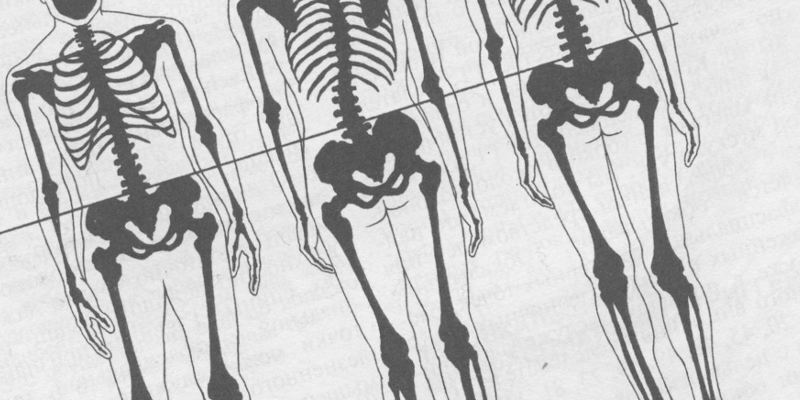 Photo: displacement of pelvic bones
Photo: displacement of pelvic bones If the treatment of this disease is not started on time, progression of the process can lead to the following complications:
- change in the shape of the back;
- changing the length of the legs and arms;
- displacement of pelvic bones;
- gait disturbance in the form of lameness;
- development of radicular syndrome at different levels;
- headaches and dizziness;
- development of infertility or problems with fetal bearing.
Diagnosis of the disease
At the initial stages of the disease, it is sometimes difficult to determine whether there is a pathological process or not. In addition to an objective examination, the doctor is helped by such types of diagnostic examination as:
- X-ray of the spine;
- magnetic resonance imaging;
- computed tomography.
These studies can be used both individually and collectively. X-ray pictures help determine the degree of scoliosis. Differentiate scoliosis in degrees is possible only because of this study.
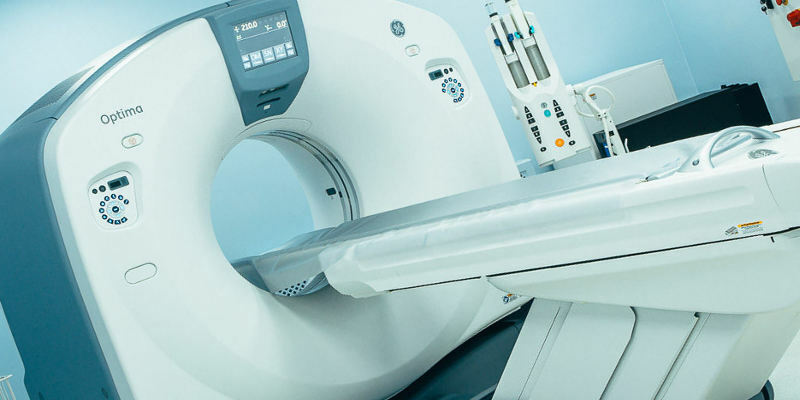 Diagnostic method: MRI
Diagnostic method: MRI Magnetic resonance imaging helps determine if there are additional degenerative changes in the spine( hernia, protrusions) and at what level. Thanks to these studies, the most rational and effective treatment tactic is selected. Of course, if the patient has additional complaints of pain in the heart, constipation, frequent urination, and others, a comprehensive examination is performed with ultrasound, electrocardiograms, and so on.
It is generally believed that scoliosis of the 1st degree in an adult does not require enhanced treatment, but only rational prevention. It can include a set of medical and recreational activities, which the physician rehabilitator selects.
With this degree of disease, the overall rhythm of life, as a rule, does not change and there are no strict limitations. In some European countries, it is believed that changes in the first type can be regarded as a variant of the norm in an adult patient.
Scoliosis of the 2nd degree in an adult leads to a certain decrease in the quality of life. Constant discomfort requires more frequent and prolonged treatment and care on the sick leave. Beginning with this degree, a compulsory treatment of the patient is required to prevent a more rapid development of the disease.
Scoliosis of the 3rd degree in an adult patient in some situations requires hospital treatment. This is due to the fact that this form always involves the involvement of internal organs and systems. Visible changes in posture, in the presence of radicular syndromes, may require surgical treatment.
How to treat spine scoliosis in adults?
Scoliosis treatment directed:
- to reduce muscle tension in the back;
- elimination of pain syndrome;
- restoration of the form of the back;
- restoration of mobility of the spine;
- improvement of blood circulation;
- normalization of the internal organs.
Correction of the scoliosis of the spine in adults can be achieved in two main ways - this is conservative or surgical treatment. The tactics of therapy is chosen exclusively by the doctor. In addition to standard procedures, after the main course of treatment, restorative therapy and prevention of the disease are mandatory.
The treatment that is assigned for this condition should be comprehensive. It includes:
- medications;
- surgical treatment;
- complex restorative therapy( physiotherapy exercises, gymnastics, massage, acupuncture, manual therapy);
- physiotherapy( electrophoresis, UHF, magnetotherapy, laser therapy);
The drugs for the treatment of scoliosis are as follows:

- anti-inflammatory drugs;
- medications that improve blood circulation;
- vitamin complexes;
- for acute analgesic situations;
- means that reduce muscle tension.
In addition to tablets and injections, creams, ointments and gels that are applied to the affected area are actively prescribed. Their effect, they contribute to skin irritation in a certain area, which improves blood circulation in small vessels, thereby ensuring the delivery of nutrients to the damaged segments. This is important, since with the changed form of the vertebrae, their trophism and nutrition are significantly impaired.
Restorative therapy is in addition to the main drug treatment. Passing and completing a full course of treatment is very important. The duration of drug therapy depends on the degree of scoliosis, the age of the patient and the presence of additional complications. On the background of therapy, the patient will note improvement in well-being, increase in efficiency and mood, besides, the degenerative process slows down.
Among rehabilitation therapy, emphasis should be placed on curative physical education. LFK in scoliosis in adults is conducted under the supervision of an instructor. It helps patients to understand which zones need to be given greater emphasis. The main task of the exercises is to strengthen the muscles of the back, the upper shoulder girdle, improve the mobility of the spine, eliminate muscle clamps.
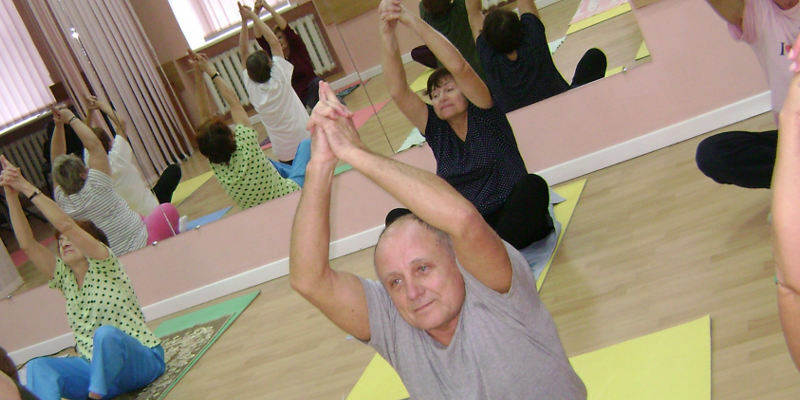
With regular sessions, ventilation increases as a result of a reduction in pain in the back. As a result of exercise therapy, physiological flexures of the spine are gradually restored, and the load on the intervertebral discs decreases. Exercises should extend to all parts of the spine.
First, simple and non-complex tasks are performed, as the body begins to adapt to new conditions, and the muscles perform their work in sufficient volume, the exercises complicate, and the duration of employment increases. At the heart of all tasks are simple actions.
These are the head inclinations forward and backward, gradually adding circular motions to the head. It should be borne in mind that in carrying out gymnastics, there may be some contraindications for performing certain exercises. After exercises in the cervical department, gradually add tasks to improve the work of the thoracic and lumbar divisions.
Circular movements in the lower back, will relax the muscles of the back deep and superficial. Exercises for scoliosis of the spine can be performed both in a standing and lying position. Tasks are conducted in a sedate manner, at a small pace, this will additionally carry out respiratory gymnastics. Contraindications to exercise therapy
- acute pain syndrome;
- increased blood pressure and the presence of cardiac pathology in the acute phase;
- disorders of coordination and disease of the vestibular apparatus;
- temperature increase;
- exacerbation of other chronic pathology;
- condition after surgical treatment.
Is it possible to cure scoliosis in adults once and for all is a fairly controversial issue. Since different degrees of this disease have been described above, it must be understood that the therapeutic costs for these conditions are different. Some specialists can say that it is possible to cure a scoliosis of 1-2 degrees, but it will depend entirely on the patient himself. Scoliosis of 3-4 degrees is treated mainly by surgical methods and, of course, under such conditions it is difficult to talk about complete cure.
The main task of surgical treatment is the restoration of the physiological form of the spine, reducing the impact on internal organs and systems. Correction of scoliosis in adults with this method is an extreme measure in the absence of the effect of conservative therapy and the progression of the process.
Any operation, especially on the spine, requires a long recovery period. Therefore, patients who undergo surgery every 3-6 months undergo a course of adjuvant therapy. After the operation, patients are issued special bandages and corsets, which are worn constantly or for a certain period of time.
Prevention
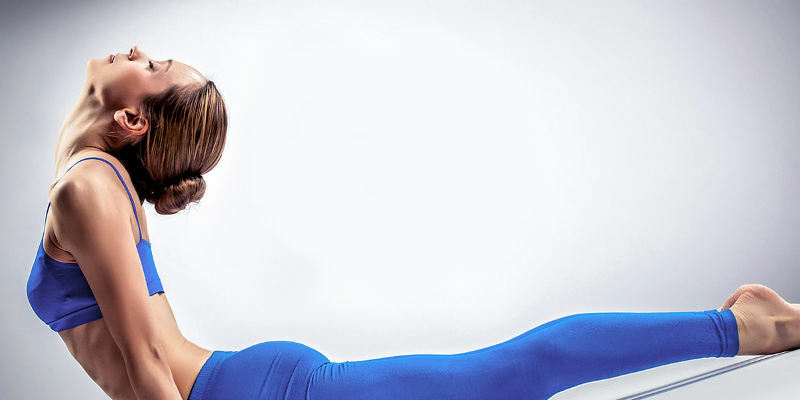
- yoga therapy;
- sanatorium treatment;
- traditional medicine;
- wearing special braces and corsets;
- lifestyle change( weight loss, balanced physical activity).
Each person can independently conduct gymnastics in scoliosis, but the set of exercises and the duration of training is determined by the doctor. Treatment of scoliosis in adults at home should be done regularly, avoiding omissions. After all, in the process of training the body gets used to new tasks and the muscles adapt to it.
In addition to restorative exercises very good effect gives a massage with scoliosis. Techniques can be used different( classic, segmental, point, canned).In some cases, a combination of different techniques is allowed in one session. The effectiveness of the massage will last longer if the patient sleeps on a properly mattress mattress.
Balanced nutrition is very important in this disease. Patients are recommended to eat fruits, vegetables, meat, greens, fish. It should limit the consumption of salt and all possible spices, seasonings, smoked or fried foods, sugar. To drink it is better vegetable decoctions and teas, it is desirable to exclude the use of coffee and alcohol.
The use of traditional medicine is aimed at reducing pain syndrome. The most commonly used are compresses and mixtures that are superimposed on the affected area. It is not necessary to throw the started classes and therapy, once felt better. It is not rational to constantly use painkillers that bring temporary relief, but the disease itself is not treated.


